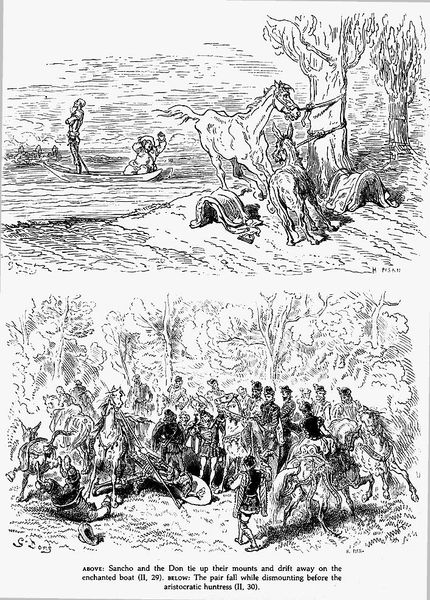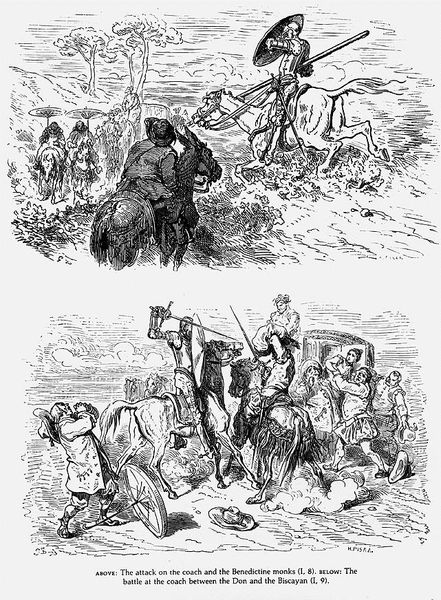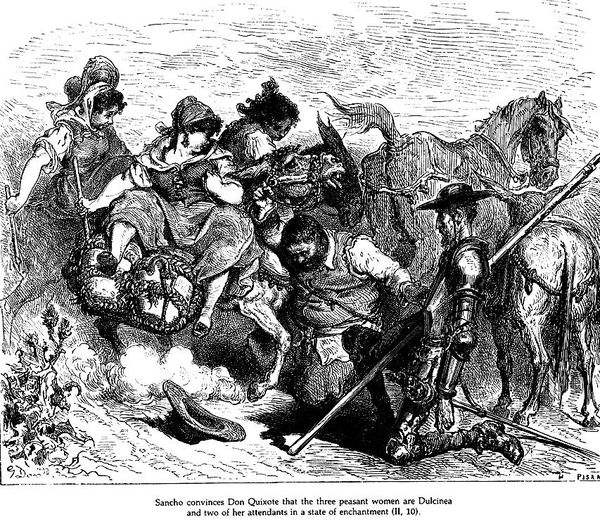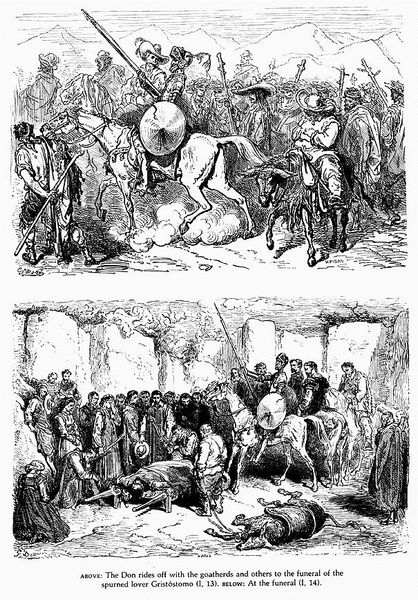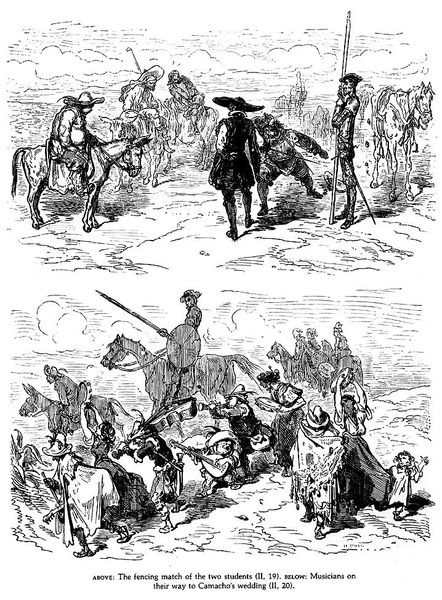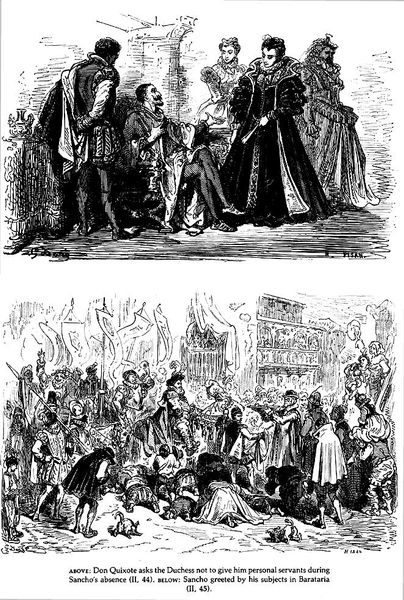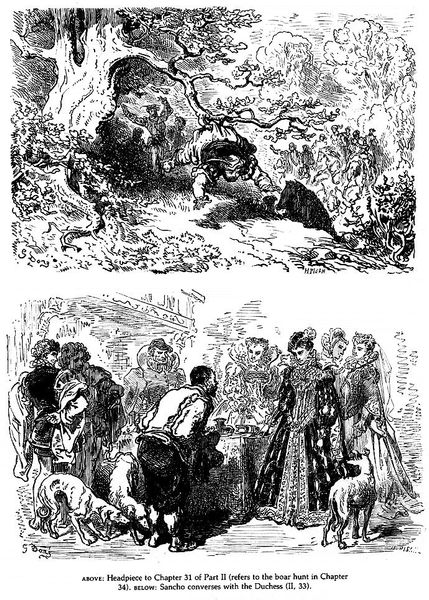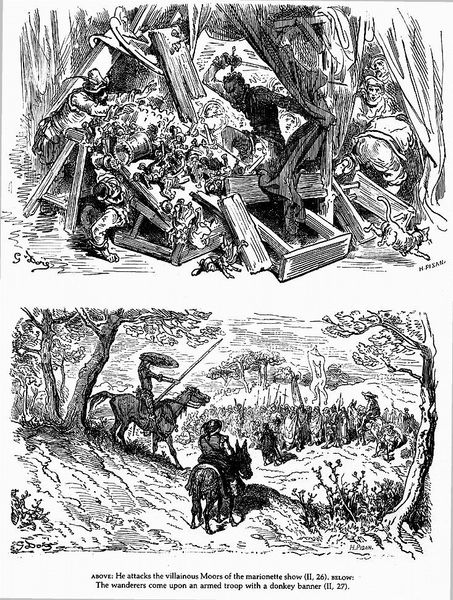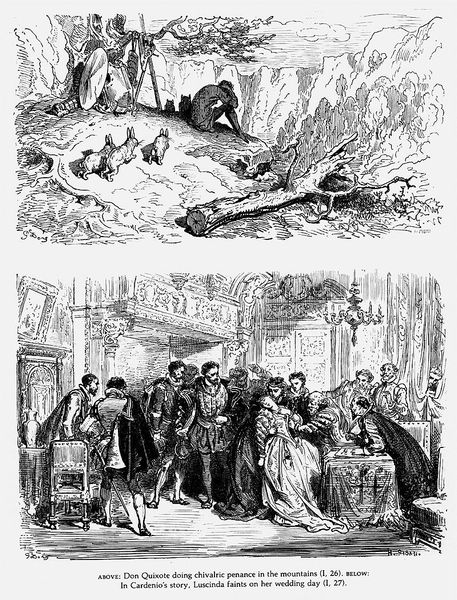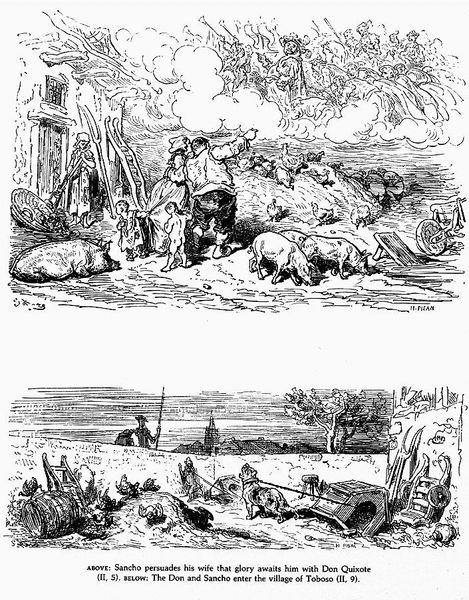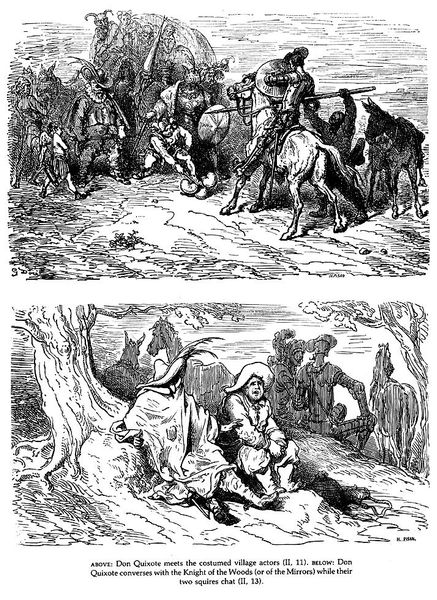
drawing, print, engraving
#
drawing
#
narrative-art
# print
#
figuration
#
romanticism
#
line
#
engraving
Copyright: Public domain
Gustave Doré made this illustration of Don Quixote using the technique of wood engraving. The process involves a highly skilled artisan, who uses sharp tools called burins to carve an image into the surface of a block of wood, which is then inked and printed. The density of marks, their direction, and the depth of the cuts all influence the final appearance. In Doré's image, the figures and the scenes are depicted with incredible detail. Just consider the texture of Don Quixote’s beard, the folds in the characters’ clothing, or the chaos of the naval battle. Wood engraving was a widely used method of illustration in the 19th century, especially with the rise of mass media. It allowed for the reproduction of images alongside text in books, newspapers, and magazines. This speaks to the democratization of information and visual culture during this period, and the complex relationship between art, labor, and industrial production. So, next time you come across an illustration, remember the artistry and labor involved in its creation, and how it connects to broader social and economic forces.
Comments
No comments
Be the first to comment and join the conversation on the ultimate creative platform.
